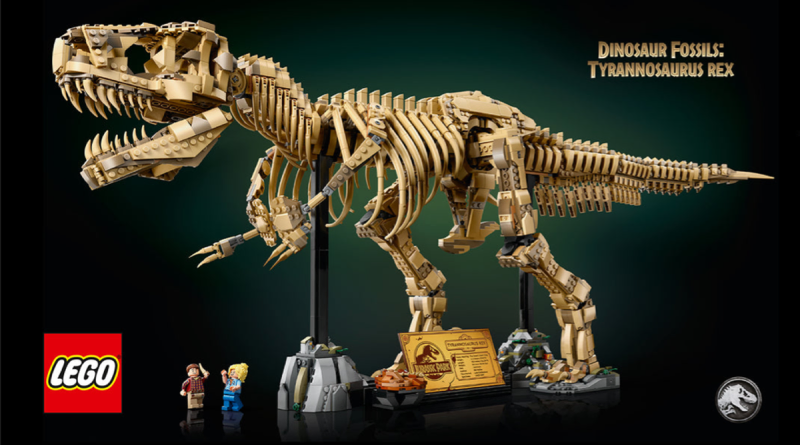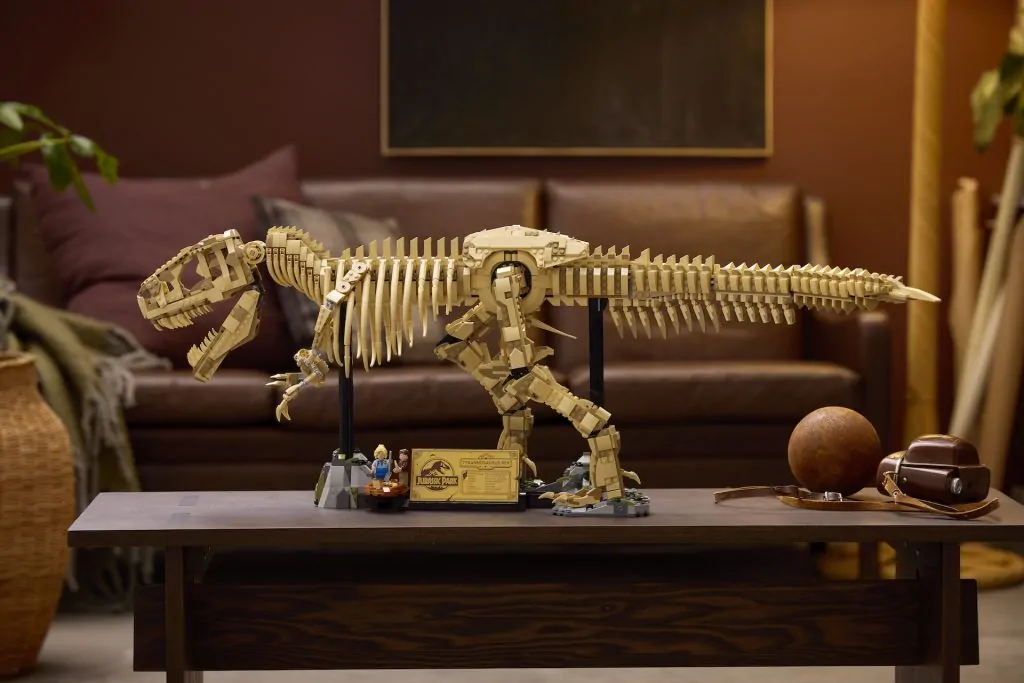If you’ve taken a close look at the LEGO Jurassic Park T. rex Skeleton (Set 76964), you might have noticed something unusual—the bones are tan instead of white. Many fans expected a bright white skeleton, similar to classic LEGO bones, so why did LEGO make this choice? It turns out, there’s a good reason behind it. In this article, we’ll break down the scientific, aesthetic, and design factors that influenced LEGO’s decision.

Fossilized Bones Aren’t White
One of the biggest reasons LEGO opted for tan is scientific accuracy. While many people imagine dinosaur bones as pristine white, real fossils don’t look like that. Over millions of years, bones undergo a process called mineralization, where they absorb minerals from the surrounding rock and soil. This changes their color to shades of tan, brown, and gray—the very hues we see in real museum fossils. By choosing tan bricks, LEGO makes the T. rex skeleton look more like an actual fossilized dinosaur rather than a plastic toy.
A Better Look for Display
Aesthetic appeal is another important factor. A stark white skeleton might look too bright or artificial, especially when displayed alongside other Jurassic Park LEGO sets. Tan offers a warmer, more natural look, making the skeleton blend seamlessly with museum-style displays or prehistoric-themed dioramas. Plus, tan pieces tend to hide dust better than white ones, which is a nice bonus for collectors who plan to keep it on display for a long time.

Setting It Apart from Other LEGO Skeletons
LEGO has used white for skeletons in many of its themes, from LEGO Castle and Pirates to Ninjago and Hidden Side. These skeletons are meant to represent cartoonish bones or fantasy creatures, not real fossils. By using tan for the T. rex skeleton, LEGO makes it clear that this set is different—it’s not just another spooky Halloween skeleton, but a scientifically inspired model meant to capture the look of real dinosaur remains.
A Nod to Jurassic Park’s Iconic Fossils
The Jurassic Park films played a big role in shaping how people picture dinosaurs, and LEGO often stays faithful to their aesthetic. If you look at the fossil displays in the Jurassic Park visitor center, they appear in shades of tan and brown, not bright white. By matching that color scheme, LEGO ensures the T. rex skeleton feels like an authentic piece of the Jurassic Park universe.
How the Color Choice Impacts the Build
Beyond the scientific and aesthetic reasons, building with tan bricks enhances the experience. The ribcage, skull, and vertebrae all stand out without being overwhelmingly bright. The skeleton also has a more realistic texture and depth, making it visually interesting from every angle.
Pros and Cons of the Tan T. rex Skeleton








Final Thoughts
At first glance, the tan color choice for the LEGO Jurassic Park T. rex Skeleton might seem surprising. However, when you consider the scientific accuracy, visual appeal, and connection to the Jurassic Park films, it actually makes perfect sense. LEGO has made a conscious effort to create a realistic and display-worthy model, and the tan color plays a big role in that. Whether you’re a LEGO collector, a Jurassic Park fan, or just love dinosaurs, this set is a fantastic addition to any display shelf.
